|
None of my end-of year challenges were planned. But they all happened, and in the moment I did not quite understand what it was all about.
Disruption I intended to run the NY marathon in November and the Honolulu marathon in December last year, 2019. These were big events to mark the end of the year and the end of the decade. But I also had overbooked myself with travel, trainings, and a lot of work. My training became sporadic and less effective than in the last few years. I also had so much work in October--days, nights, and weekends, plus travel--that by the time the third week of October arrived I was exhausted, and my knees were bothering me. What a disappointment that I had to cancel my participation in the marathons! Tuning In I’ve been called “the queen of self-care,” but somehow I had bitten off more than I could handle. It was clear I had to regroup and revise my self-care and training regimens. First, I took three days off (including a spa day) so I could rebuild enough vitality to continue delivering to my clients in November with good energy. Second, I sought a sports acupuncturist for my knees, stopped running, started a short yoga routine every morning, and began swimming more often. Third, I had an upcoming trip to Honolulu and the North Shore and decided, during my holiday, to take surfing lessons, practice yoga, and do a bit of hiking and swimming. The surfing was so exciting. My preparation --the weight training, the practice of getting up as if on a surf board, and the Portugal surfing trip last June--had helped. I was standing up almost every wave and was exhilarated. This whole experience was a reminder about how important it is to be in tune with our body. Our mind can want us to take on more than we think. I believe in stretching, but I also believe in knowing your body and understanding when to stretch and when to renew and refuel. Compassion and Self-Acceptance This self-awareness we gain from our bodies also deepens our confidence, helping us to develop more compassion and self-acceptance, to set more realistic expectations, and to lead ourselves better. My last webinar on the “Body and Coaching: Power, Focus, Control, and Rehabilitation” for the Institute of Coaching https://instituteofcoaching.org/resources/webinar-body-coaching-power-focus-control-and-rehabilitation discusses how to support leaders and how to use the body to support leadership growth. The body can play a key part in coaching leaders who are working on addressing leadership challenges such as presence, empowerment, and self-management as well for clients recovering from health challenges or injuries. I’ve ran 8 marathons in total, 7 of them in the last 4 years. I’m proud of that. But I want to keep my knees working in good order as long as I can, so I’ve decided to keep running small runs for now. My new and continued focus for 2020 will be on ocean and bay swims (5K Miami, etc.), yoga, and continuing to learn surfing around the world. What will your focus be in 2020? If you would like some information about coaching, training, or facilitation services, feel free to reach out to me at [email protected].
0 Comments
My sports training is keeping me busy and excited as well. Between work and travels, I’ve dropped triathlons this summer and focused instead on marathon training, preparing for the NY marathon for the third time and the Honolulu marathon for the fifth time. I’ve also had to streamline my marathon training: two short runs during the week and one long run on weekends.
But wait, as I was conceiving this blog--coming back from a run--I spoke to a new colleague who suggested that I add a bike session and a swim session to my training. These workouts already were in the schedule suggested by my coach, Rob Colburn from CBC Endurance Training http://colburnbodyconcepts.com/activities/training-options. Yet I had dropped them because my schedule was too full of work. My new colleague explained how the bike training would help me build more stamina and strength. I had forgotten the importance of these extra trainings and why they were included. I also thought they were recommended for when I do triathlons and ocean and bay swims rather than marathons. Then I remembered that in the last few years, when I have crossed trained, I could feel my strength and stamina build fast. People Get Smarter By Rising To a Challenge Angela Duckworth, author of Grit: The Power of Passion and Perseverance, says “people get smarter by being challenged” . . . and persisting in the face of those challenges. Yes, I’m busier and busier, and dropping the wrong training could cost me the extra energy and stamina I may need to finish two marathons this year. I’m now taking a second look at my training schedule and over the next few months will be re-inserting my bike rides and some swims. A lot of the clients I work with also are getting busier and busier. Quite a few right now had let go of building their networks, within their organizations as well as externally. They knew that they needed that network and yet had put it aside. The lesson of “grit” is to stick to it. As they are picking it back up, some are getting support from their supervisors, starting to connect with different parts of the organization, and using that network to leverage these relationships to move their business and career goals forward. One of these clients said, "I realize that I let myself get derailed from pursuing my own networking goals while I helped direct reports and peers with their goals. But now that I see that, I'm getting back on track and will refocus on building my network."Persistence is paying-off, she is already seeing results. Tenacity Over the Long Haul Is Everything As part of her research on qualities that lead to success, Duckworth discusses the importance of deliberate practice: “This is how experts’ practice. First, they set a stretch goal, zeroing in on just one narrow aspect of their overall performance. Rather than focus on what they already do well, experts strive to improve specific weaknesses.” This sport adventure I started back in 2013 after a disappointing personal work setback has evolved over the last 7 years. I never imagined that the short run I had been doing in Central Park or along the Hudson River on the Jersey pathway and the 1.4 mile swim I did every September on Cape Cod for the last 12 years would turn into accumulating 7 marathons, multiple bay and ocean swim (5k Miami swims, 2.4 mile Nav-E-Sink Rumson, NJ swims), and even attempting the 4.4 Chesapeake Bay Swim twice (not yet completed). The Chesapeake Bay Swim… it’s been just out of my reach. Projects I’ve taken on in the last year have felt like that as well--just a little ahead of my learning curve, so I can stretch myself. I love seeing my clients stretch themselves as well. The coaching clients and leadership program clients who are excited about learning, growing, and challenging themselves really enjoy the journey. Stretching usually brings fear and excitement all at the same time. Some of these clients are learning how to be more strategic, how to create, design, write, and present their new strategy, goals, and/or innovations. Others are pushing themselves to be better team leaders or learning to have crucial or difficult conversations. And still others are focused on building a stronger network, conducting more cross-functional collaboration, and partnering across their organization. What has kept me on my toes in the last year has been partnering with new international consulting firms and challenging myself to learn more. It’s been both exciting and a stretch. I also have been lucky enough to design and create a few leadership and career growth programs. These have challenged me as well as taught me so much more about leadership, learning, and transformational growth. If you would like some information about coaching, training, or facilitation services, feel free to reach out to me at [email protected]. Keeping Up
Do you feel like the world keeps moving faster and faster? Scientists actually have confirmed Einstein’s calculations showing that time is speeding up. But here we’re not focusing on the science; rather, we’re talking about the “feeling” that the pace of life is increasing. Fast Track Change I know that feeling. Lately, things have picked up in my life professionally, educationally, and personally, and this has impacted my sports training. In the last few years I’ve been able to balance the key areas of my life to include a pretty robust training schedule, one that allowed me to complete marathons, ocean and bay swims, as well as a few triathlons. But now I’m struggling to keep everything going. How do you keep up: at work? at home? What strategies do you use to adapt to a changing environment? How do individuals who do sports training adapt? Developing Agility One competency that effective leaders develop is leadership agility. Bill Joiner and Stephen Josephs in their book Leadership Agility: Five Levels of Mastery explain that leadership agility is not a single competency but rather made of the following competencies: context-setting agility, stakeholder agility, creative agility, and self-leadership agility. They go on to state that highly agile leaders realize that we live in an era of permanent change, rapidly adjust their behaviors, and are resilient. In short, agility is the capacity to creatively navigate and adapt effortlessly to new circumstances. I am looking for an agile mindset, agile exploration, and an agile body to carry me forward this year and sustain all of the professional, educational, and physical goals I have set for myself. I will be starting this by first following one of my basic principles: “when depleted, go resource and renew yourself.” I will be doing this next month through traveling, surfing, and spending time with friends. My clients also need to master leadership agility in their professional as well as their personal life to attain the goals they set for themselves. A few have had to adjust physically their daily regimen because of sports injuries, others have had to work on their self-leadership upon receiving 360 feedback. Many are dealing with complex changes in their organizations and their companies as well as on their teams, requiring them to flex their leadership agility skills. This year I wanted to try an Olympic triathlon. I’m not sure it will be possible, but I haven’t given up yet. Still, my hour or 2-hour runs have turned into 30-minute runs, and I’ve even started moving towards doing running streaks (a series of 1-mile or more runs daily over time) instead of my long runs. Where has my time gone? A new, more demanding schedule of full-week delivery for clients, which then requires night and weekend preparation. Plus an Emotional Intelligence year-long training as well as a few other trainings—this is what has captured a lot of my life and my time. I know that exercising tends to give me more energy, so I am really looking at how can I keep training with a very demanding schedule and hope that I will find some agile ways to do so for the rest of this year. I’ve been able to complete a half marathon and a 2.5 swim but have had to skip a few runs, a 2.4 swim, and am wondering if I’ll be able to do one or two triathlon this summer as well as my two end-of-the year marathons. I have clients continually dealing with this, the juggling of their professional life, personal life, and robust self-care regimen. I like to suggest to them to read the Tony Schwartz book The Way We Are Working Is Not Working as well as to start one sport of choice to help them find strength and energy. They also explore ways they can make sure to find renewal strategies throughout the year that it is taking a weekend away from their cell phone or taking a few vacations. I am now having to do the same for myself. If you would like some information about coaching, training, or facilitation services, feel free to reach out to me at [email protected]. Helping people improve. That’s my job. But how do you get better? Let’s take a look at three basic strategies that work in sports and on the job.
Assess Where You Are I’m always interested by the circumstances of my sports training. I pay attention to fluctuations of energy, conditions, and timing. Is it recuperation time after two marathons? What is my body calling for? I have to look at the whole year and know when I’m going to train and push hard and when I need to slow down and recuperate. If you have ever failed to achieve a goal, you know you may have needed to do something different but you may not know what that something is. So the first step in getting better is to stop and assess where you are. If you lead an organization, you might ask: What is the zeitgeist of the time? What is the organization facing externally and internally? What does it mean for me and for others? Where do I need to focus in the coming year? Select Meaningful Training With these new insights and understanding, you will be able to choose the right goals for yourself and how you will get there. I did not get in the lottery of the Chesapeake Bay swim this year. Instead, will I tackle an Olympic triathlon this year? How do I get ready for it? Is this a year dedicated to form? To endurance? Atheletes often drill, repeating certain movements again and again to improve. In business, too, you must train. If you want to be an effective leader, what skills must you practice again and again? In his book Outliers, Malcolm Gladwell talked about needing 10,000 hours of practice to develop mastery. Mastery isn’t only a matter of practice, but it’s an important piece. Then measure your progress. The more you practice, the better you get. Challenge Yourself By Moving the Bar Climbing higher, always climbing. If you want to maximize your potential, you must continually reset the bar. After all, once you achieve a goal, it’s done. You can plateau or set a new goal. The clients I coach usually focus on 3 goals at a time. They also revise their goals once met and look forward to seeing what might be their next level goals. Leaders help their direct reports do the same. Every year is different because every year the context changes. My clients change, their circumstances change, sometimes their supervisor or peers change, and many times the company changes. All of this affects the goals for the year. Our world is changing at such a rapid pace that we must continually cycle through this process of assessing where we are and what matters. What goal is next for you? What skills must you develop to get there? Once you’ve achieved mastery and attained the goal, how do you challenge yourself? If you are ready in 2019 to keep learning, growing, and deepening your leadership, please email me at [email protected]or visit my website at www.desormeauxconsulting.com. I love ending the year with a trip to Hawaii. Nothing beats running the Honolulu marathon and taking surfing lessons on the North Shore while watching the Billabong Pipeline Competition!
Try Something New Before this trip, I ran the NY marathon for the second time and started reading the book Let My People Go Surfing. Yvon Chouinard in his introduction says, “My company, Patagonia, Inc., is an experiment.” I love this quote. I think life is an experiment —as are business and leadership--and it’s a great philosophy to live by. When we try something new, we learn what works and what doesn’t. How alive I feel when I practice a sport and make a discovery, like during my surfing lessons! The water feels great, the view is pretty amazing, and it’s an experiment to see how each takeoff goes: will I be able to stand up? will I finally get it this time? Starting a leadership program may feel the same way. Fortunately, a program that gives participants a chance to experiment can be a portal to better results. Sometimes leaders are surprised at how they finally are able to tackle a behavior they’ve been wanting to address or build a new skill. Yes, it feels awkward at the beginning. So I advise participants to be patient and practice, take a risk and try out the new behavior without judging themselves. It’s new. It might take a few tries--or maybe a lot of them!--before getting it right. Just like trying to surf. Stop and Assess “I took a dozen of my managers to Argentina, to the windswept mountains of the real Patagonia, for a walkabout. In the course of roaming around those wildlands, we asked ourselves why we were in business and what kind of business we wanted Patagonia to be . . . ” p. 61 Yvon Chouinard The beauty of changing setting to assess where you are is invaluable. New settings, meeting different people, and experiencing different cultures open us up to other ways of knowing and thinking. This is one reason I like working with leaders offsite. It gives them a chance to step away, pause, and assess with other leaders what is working with their leadership and what could be improved. Leaders all have strengths, and in group coaching they can share these strengths with their colleagues while also learning from them. This is similar to sports. In lessons with fellow surfers this past year, we developed a camaraderie that deepened our learning; we were able to share feedback, successes, and failures, learning from each other’s experiments. I also experienced this kind of camaraderie earlier this year during a Telos Institute four-day Grand Canyon hiking and camping trip. These leadership trips can really deepen bonds among participants, giving participants opportunities to challenge themselves physically as well as to reflect upon their careers, leadership, and life. Decide What’s Next The New Year 2019 is upon us, and I’m ready for more experimentation with the leaders I will be working with as well as with the sports I continue to learn (ocean swims, running, triathlons, and surfing). What about you? What will you experiment with this year? If you are ready in 2019 to keep learning, grow, and deepen your leadership, please email me at [email protected]or visit my website at www.desormeauxconsulting.com. What a great summer this was. Why? My trips to Quebec and California, following on springs trips to the Grand Canyon and northern New Mexico, helped me achieve a goal, set in March, to be more in nature and make sure that all parts of me were nourished. As I reflect on those experiences and what it takes to be at our best, what comes to mind is a great book by journalist and business leader Tony Schwartz called The Way We’re Working Isn’t Working: The Four Forgotten Needs That Energize Performance. His premise is that we have to create a life that is sustainable (physical), provides security (emotional), allows self-expression (mental), and has significance (spiritual). He gives inspiring examples of leaders who re-energized explored their lives in addressing one or two of these areas.
1. Find the Right Balance So where do you put your energy? Working with my clients, I see them sometimes needing to step back and look at what areas of their lives may need more attention. Many have invested in their mental/analytical selves, putting a lot of energy into day-to-day priorities and projects--but may have forgotten their bodies and sometimes their emotional selves. Others invest in their emotional selves, putting energy into nourishing those around them and paying attention to their relationships--but they might need to pay more attention to their mental side. For example, a new client I am working with is delivering on developing the Asian market but is feeling like she could be heading towards a burn out. She is ensuring the needs of everyone around her are being met but is forgetting herself in the process. Taking a step back and evaluating where to put our energies is a good place to begin and can lead to major benefits. 2. Do Something New and Get Inspired We all need renewal, and it probably looks different for each of us. For me, this summer was nourishing on multiple levels. I had a chance to go fishing with one of my uncles and his family in the north of Quebec. It was majestic, beautiful, refreshing, and I learned a new sport that I fell in love with. It was emotionally, mentally, physically (you need strength to reel in those large walleyes!) and spiritually uplifting. I also was able to go to Big Sur, California, which was so beautiful and re-inspired me. Sometimes I dream of becoming a surfer, and California has plenty of those. Mixing visiting friends while attending two conferences made it even more enjoyable. Likewise, the leaders I work with need inspiration or re-inspiration. One client I had worked with in the past felt like his leadership was good because he always got good financial results. When I had a chance to work with him again, he finally realized that he could try to do something else, something new. He decided to join a board and ended up on one perfectly aligned to his passion. You could see his delight and excitement at making a contribution and enjoying himself at the same time. He also started exploring how he could extend his knowledge and his expertise to contribute more to the company. 3. Continue the Journey How do we sustain high performance over time? Tony Schwartz suggests that integrating rituals into our lives can help us balance periods of intensity with periods of renewing ourselves. For me, that’s daily athletic training. Although physically I was not at my peak this summer, I did some great swims and a lot of running, with two sprint triathlons. Nothing too big or too fast, but just enough to keep it going. As I’m getting ready for two marathons I continue to learn, adjust, be coached, and grow. Clearly my physical journey in the last few years has had its ups and downs. Performance, motivation and learning is at the forefront as well as diligence, persistence, and practice. Let’s not forget joy and satisfaction! Complementary to the Tony Schwartz book is a another I’ve started to read and will be reading more of this fall-- Daily Rituals: How Artists Work by Mason Currey. This book reveals the myriad ways artists (writers, composers, painters etc.) work. The way the structure their day, the rituals they use, as well as how they use time and tools. Currey reminds us to stay creative, find a rhythm, find a way to work, exercise etc. that is personal. The book is full of insights and inspiration on how to work. I love seeing leaders grow, stretch, and strive to be their best. They are all at different places in their leader journey and I feel blessed to be able to work with them. The ups and down of their careers is part of the journey. Every day they find their way to step into their work, with creativity or not. It’s up to them to find a rhythm, a way to work that fits them personally. Refueled by great summer adventures I’m hard at work in continuing to strive to be the best I can be. I hope you are feeling refueled by yours. Wherever you are on your leader journey--if you need a coach, a leadership program, and or a team alignment session--the consultants and coaches at Desormeaux Leadership Consulting are ready to partner with you. If you are interested in learning more about our services, you can visit our website at www.desormeauxconsutling.com or contact me: [email protected]. 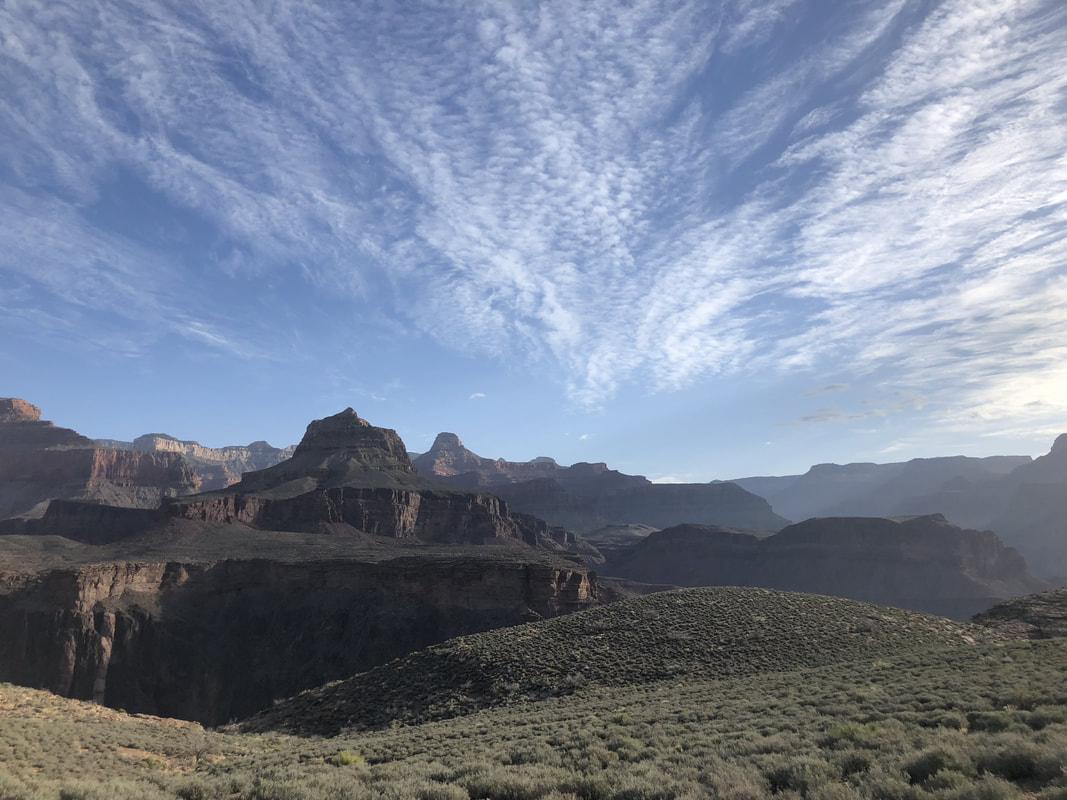 Well, I made it to my Telos Leadership Venture! Because of some injury to my back followed by a cold, I was not prepared like I would have wanted to but I made it. What an amazing experience it was from the Wildland Trekking https://www.wildlandtrekking.com team of two, Edie and Tess, to the two Telos Institute leaders http://thetelosinstitute.com, Lydia, and Suzanne and the four of us, Nora, Katherine, Heather and me. The four-day adventure started at the South Rim of the Grand Canyon down to the first campsite, then further down to the Colorado River for our second-night camping, then to a creek for our last camping night and a long uphill to finish the Hermit Loop. Be as prepared as you can be! I’ve been training for a while that it’s for ocean swims or marathons. Sometimes I arrive really well trained, no injury and full of energy to these events. Other times I’m not so lucky. Last November’s marathon was preceded with food poisoning a week before, the Hawaii marathon with a cold a week before and this Grand Canyon trip with a back injury as well as a cold. Clients of mine are sometimes fully prepared for a presentation or an important meeting Sometimes they are really prepared to take a new role and sometimes the curve is steep. They realize that the presentation demanded a lot more preparation, the meeting they showed up at also included board members and the new position they took has a tone of work that needs to be redone and cleaned up. I’m not sure if we can ever fully be prepared and know how things will unfold and sometimes to add to the mix circumstances beyond our control and that we did not expect gets in the way. This Grand Canyon trip really showed me that. I knew I was not in the best form but felt I could tackle it even though I did not quite know what I had signed up. Maybe that is we can’t really know what we’ve signed up for. It’s there to be discovered just like the Canyon was there to be discovered. Perception is everything! So, I have one day and a half done in the Canyon and it’s beautiful. We all stop and one of the wildland guides and one of the Telos ask me if I think I can do the full trek. They are worried about my pace and my breathing and wonder if I should turn back. I’m surprised by the request but I understand how they may be concerned. Their perception is that I might have a hard time especially on the last day that is mostly all climbing upward. They also don’t know me well, they haven’t seen me do my 6 hours long marathons and my 2.5 mile swims. We decide to keep going and I accelerate my pace and within the next 2 hours they are reassured and know that I will be able to complete the trek. My clients are surprised by some of the feedback they are getting especially from 360’s. What is surprising to them is how people are perceiving them and then concluding because of the perception. For example, of one of my client though really caring had no idea that many of his direct reports thought he might be too abrupt and that he yelled. As soon as he learned that this was the case is he started working on monitoring when he did so and slowly learn to stop speaking abruptly and to harshly. Sometimes we can address a perception and a behavioral the stop, sometimes it may take quite a long time. You are stronger than you know! Resilience, inner strength, and determination can go a long way. There are also ways to build character and strengths especially if you’ve had hard challenges in the past. Every new challenge you conquer builds your inner strength. I am not a professional athlete but I like the challenges I give myself. I like feeling healthy and I like feeling alive. Sports make me feel alive. In the Canyon as far as I knew, I believe I had what it would take to make it to the end and I did. The Venture was not easy but because it was hard it made it possible to learn a lot more about myself and my co-trekkers. My clients are also challenged, by changes in their organization, by the feedback they get, by challenges they are given. I admire their tenacity, their discovering strengths they did not know they had, their tackling learning, growing and changing. They are stronger than they know and some of them may know that they are strong. In this trip, I was stronger than others knew and maybe then I knew because I had never done so much hiking in a day and did not fully know what trekking upwards for a full day is. I thought that all of my previous training would have made it easier but my health setbacks did not help this time. Still, I completed a difficult trek and am proud of it. And the work continues! I came back stronger in so many ways, spiritually, emotionally, in my knowledge of what trekking is and even physically. I am back swimming and running and getting ready for a 5K swim, the 4.4 mile Chesapeake Bay swim as well as two marathons at the end of the year. That you’re getting a 360 feedback or attempting to learn a new skill, a new behavior, that you are attempting a new venture or an upcoming swim or marathon we are all of the journeys of learning, growth and experiencing life! On to the next adventure! If you are interested in learning more about our services you can visit our website at www.desormeauxconsutling.com or contact me [email protected]. Just when I thought I was hitting my stride and had planned an exciting training year, after a month of training, I pulled my sciatica in my right leg and lower back. This made it difficult to relax during my trip to Charleston. My travels turned into visits to chiropractors, a couple of stretching sessions with Charlie at a gym, and massages to relieve the pain that did not want to go away. Training had to be put aside this February and this happening while watching some of the Winter Olympics . I felt like my training was getting reset at ground zero. Last year I had recovered from a fall, this year it was my back. 1. Inner Strength If you listen really carefully to the stories of the Winter Olympic athletes, in between the lines are all these recovery stories - accidents that were followed by months and years of physical therapy. Some of the athletes perform with injuries not fully healed while others, after tremendous recovery efforts, are healed and winning medals. Sports training is not for the faint of heart and neither is leadership. 2. The Brass Ring One of my mentors always says to me, “Leaders must be aware that when they say yes to the brass ring, it means saying yes to everything it will entail and some of it may not be easy.” Many leaders strive for the next promotion or the next stretch assignment. They may have a vision of what they feel they could do or accomplish, but they may not be aware of everything that new position or stretch assignment may entail. Leaders are surprised by the need for influence and/or politics after stepping into a new position. They are also surprised by how some colleagues may treat them differently. And they may not be ready for the challenges in accomplishing their vision. Leaders and athletes need to be ready for everything their roles entail and especially for the unexpected. 3. Resilience Another version of this may be leaders who get demoted or get a new supervisor with whom it’s much more difficult to work. There is no prescribed way to move forward in one’s career, and sometimes the desires and challenges are not coming from within but come from unexpected events: leaders might inherit new employees when they step into a new position or else report to a new supervisor themselves; reorganizations happen; changes in the market or products may require new skills or create opportunities or challenges. One never knows what tomorrow may bring. Skills needed today from leaders are agility and flexibility as well as resilience. 4 Looking to the Future Many of the clients I work with are looking at the future with questions about changes in their organizations, in leadership as well as their own trajectory. As I am writing this I am looking at the future with hopeful eyes and questions. Will I be able to do my 4-day trek in the Grand Canyon in April? Will I recover in time for the 4.4 Chesapeake bay swim in June? I think of all the athletes who had a chance to go to the Olympics but could not because of injury or setbacks. I’ve had to cultivate patience, courage, persistence, and resilience the last month, and I know many of my clients as well as athletes going through changes have had to summon the same competencies. These competencies are essential to continuing the journey towards success. If you are interested in learning more about our services, you can visit our website at www.desormeauxconsutling.com or contact me: [email protected]. When I set out to schedule to run 4 marathons last year it was out of excitement and exhilaration. With the support of friends, coaches and resources like http://colburnbodyconcepts.com, I made it happen. The training went well and I completed my 4 marathons. I’m happy to have set those goals and to have completed them. My last two were a little tougher due to food poisoning the week before the NY marathon and a cold before the Honolulu marathon but I did it!
Clients that I have worked with over the last 15 years are continually looking at their goals for the next year or the next 3 to 5 years. I’ll always remember Watts Wacker giving a presentation about working with companies looking at their next 20 to 100 years. He helped companies look forward, to a future where their people may not even be on earth; He showed them to envision leaving a strategic legacy for the future generations to come. Two years or two hundred, the beginning of the year is great for my clients to set their goals. Many companies have worked on a strategic planning process the prior fall and are starting to implement their goals. Some clients are leading a division or a function and make it a ritual to review their goals while others have work and personal goal that they would like to accomplish. Other clients I work with are reviewing their career and planning for what is next. Where they are in their career path may lead them to choose to work on specific skills or trajectory to get them to where they want to go. I love setting new goals. This year I’m working on speed. Speed in my running and cycling as well as my swimming. I have a plan and have started to implement it. My schedule is set and I am completing it every day. Since my 2018 sports training goals are different this year, I plan to run only two marathons; NY and Honolulu. I will also swim the 4.4 Chesapeake Bay Swim for redemption (missed it by .4 mile last year). I plant to do the Navesink River and the Provincetown Swim4life Ocean swims again and add two triathlons. I also have a completely new goal this year: A Grand Canyon 4-day trek with the Telos Institute, www.thetelosinstitute.com. I started dreaming of climbing mountains about two or three years ago and here I am hiking my first one. What are your goals for 2018? Do you have a plan? Are you working on two or three specific goals? Where are you in your career path? What will you strive to accomplish in 2018? If you don’t know what your goals are start dreaming them. What is it that you are passionate about, want to learn, want to get better at….? Your dream might just become reality! I’m excited about my 2018 goals. Wishing you all great goal setting for 2018 and a great continued journey! Losing or losing gracefully if you can!
There is something amazing when you watch the 176 cyclists of the Tour the France giving their all day after day. What amazed me most this year was their fearlessness in falling down. Of course this is not what any one of them would like to see happen but they all know that its par for the course. Seeing how some of them were eliminated or injured and could not continue the Tour, put my own basic training (I’m not a professional) and competitions in perspective. I was taken out of the water at the Chesapeake Bay 4.4-mile swim at the 4-mile point. This was my first time and all I wanted was to just finish the race. Well, it was not to be. How did I react? I was angry, very angry. My reactions are similar to a lot of athletes, professional and non-professionals, as well as leaders. First we can’t believe that we’ve lost, then we get angry, then we negotiate and analyze, and then we move on. Very similar to change models and the grief process. Clearly I needed to bow to the rules and learn that this is just a reflection of where I am physically, the conditions and the fact that it’s my first time. I needed to accept it, go back to my training and try to improve myself. Some of the cyclists in the Tour de France take it with grace. I also saw one cyclist, upon seeing someone beat him at one of the races, yell out in the pain of not winning. I get it. We should all get it… because like a very smart mentor of mine once asked me “How does it feel to lose?” ….I responded, “Not really good, in fact pretty bad”… “He then followed with, “Get over it.” This particular mentor said to me, “One thing we don’t study enough of is failure” and asked me to reflect on that. There is so much learning that can come out of studying failures. First, what was the context, what happened at the beginning, middle and end? For sports we may consider, the conditions, the weather, the day itself; for leadership the context, the people involved, the goal and the setbacks. What were you feeling at the beginning, during and after? I think one of the most important lessons in taking the time to look at failure is the learning as well as having compassion for oneself and others. Many forward-looking organizations are now embracing failures especially when it comes to creating new products. Another context is in coaching. I always give my clients a couple of months of trying out new behaviors and giving them permission to fail. I want them to be able to observe themselves, see if they took the risk and tried the new behavior, and see if they were able to do it. If they failed I ask them to reflect and see if they caught themselves before during or after doing the old behavior. Permission to fail gives them freedom to try out different approaches and take risk. We then review what worked and what did not work in learning this new behavior. Setbacks and failure can teach you to get better and stronger. Like an ironman colleague shared with me, “When you do an ironman you can bet that something will go wrong so know that before you start.” I haven’t even contemplated attempting this event. I’m still at the marathon level, the swims and just did my first sprint triathlon, but am happy to learn from all my sport colleagues I meet along the way. Back in the spring, while training for the SF Marathon and the upcoming Chesapeake Bay Swim, I fell down and hurt my ankle. I was upset. Acceptance was the first step then coming up with a new plan was next. I was able to focus my training on swimming for a while instead of running since the swim was first. The water was healing for my ankle. I also used Headspace, the meditation app that has a section on Competition and specifically on Rehab. My ankle healed well and I was able to do both the swim and the marathon. Since then I’ve met a lot of non-professional athletes, some are my leadership coaching clients, others not, who have had injuries. All are navigating their injuries as well as they can. My clients run into the same challenges. New changes at their organizations, promotions, demotions, new supervisors, challenging direct reports, difficulty in meeting their goals. Developing competencies such as persistence, agility, resilience and being able to work with ambiguity really can help navigate setbacks. Learning to fall down and get back up may be my best motto. I’m pretty good at it in work, in sports and in life. I have some clients that don’t end up getting what they want and are stuck in holding a grudge. It’s really getting in their way of being successful. Emotional Intelligence is great but being able to work through difficult emotions is also important. One of my client is in the process of realizing this and knows that working through this would liberate her to start dreaming, hoping and working towards what she is capable of. Following the Chesapeake Bay Swim I then continued my progress and trained for the San Francisco Marathon. It was a great experience. I’m a slow runner but I like to get to the end and earn my medal. Around the 18th mile I was hoping to make it to the end in time to get a medal. The memories of having been plucked out of the Chesapeake Bay Swim were fresh. I stayed focus, pushed myself some and did complete the San Francisco marathon and celebrated with a medal. These days I’m focusing on the journey a little more while still wanting to better myself as I’m getting ready for the NY marathon for the first time and the Honolulu marathon for the third time. Leaders as athletes will fall down, fail and continue to learn from their failures. We can all benefit from slowing down and examining why and what we could do differently next time. That is how one gets better! On to the NY marathon! Wish me luck! |
AuthorLyne Desormeaux Categories |
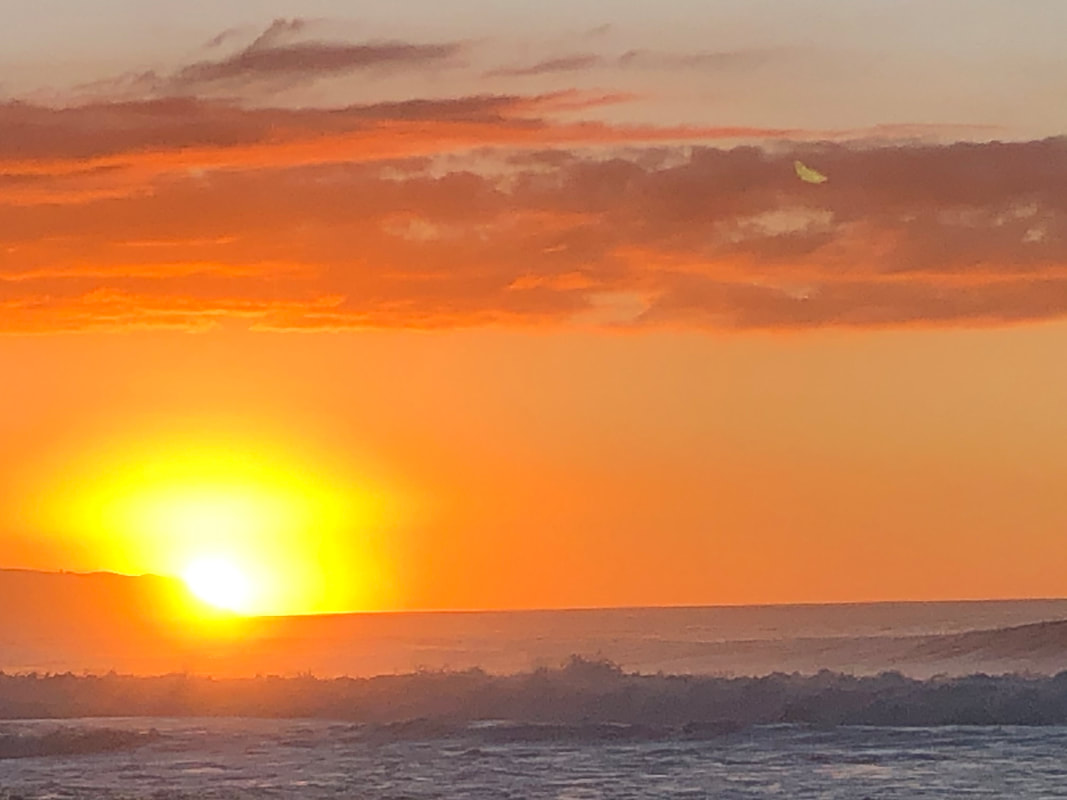
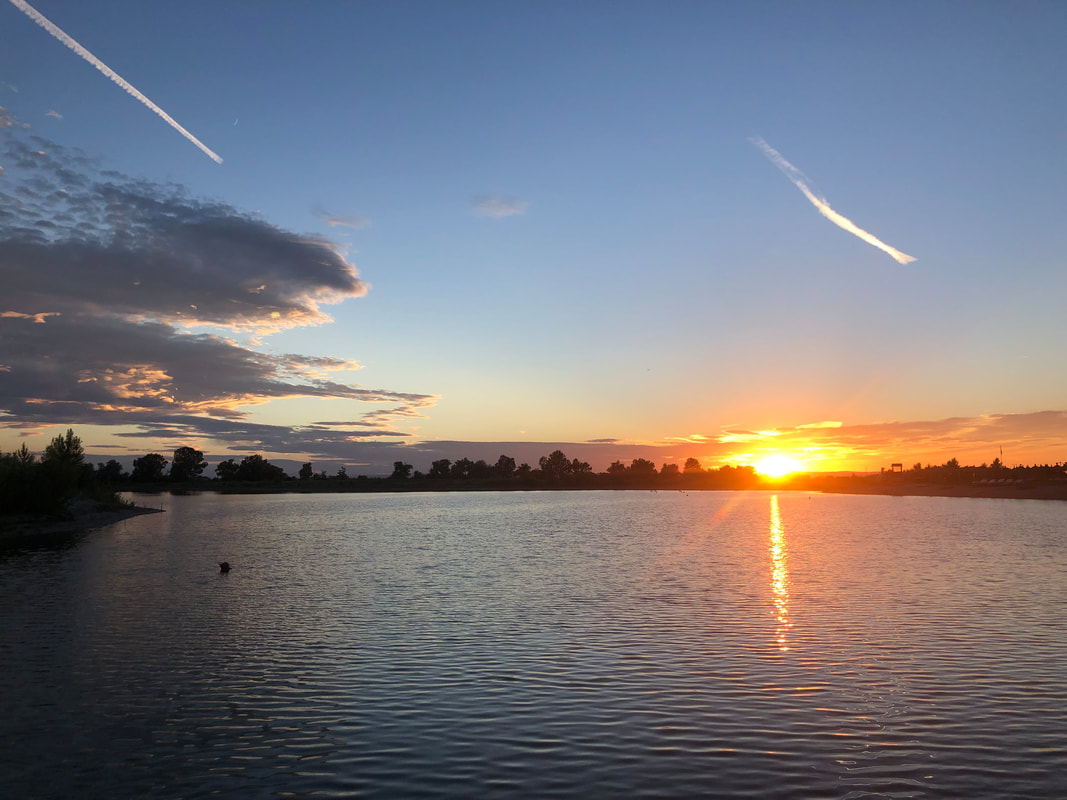

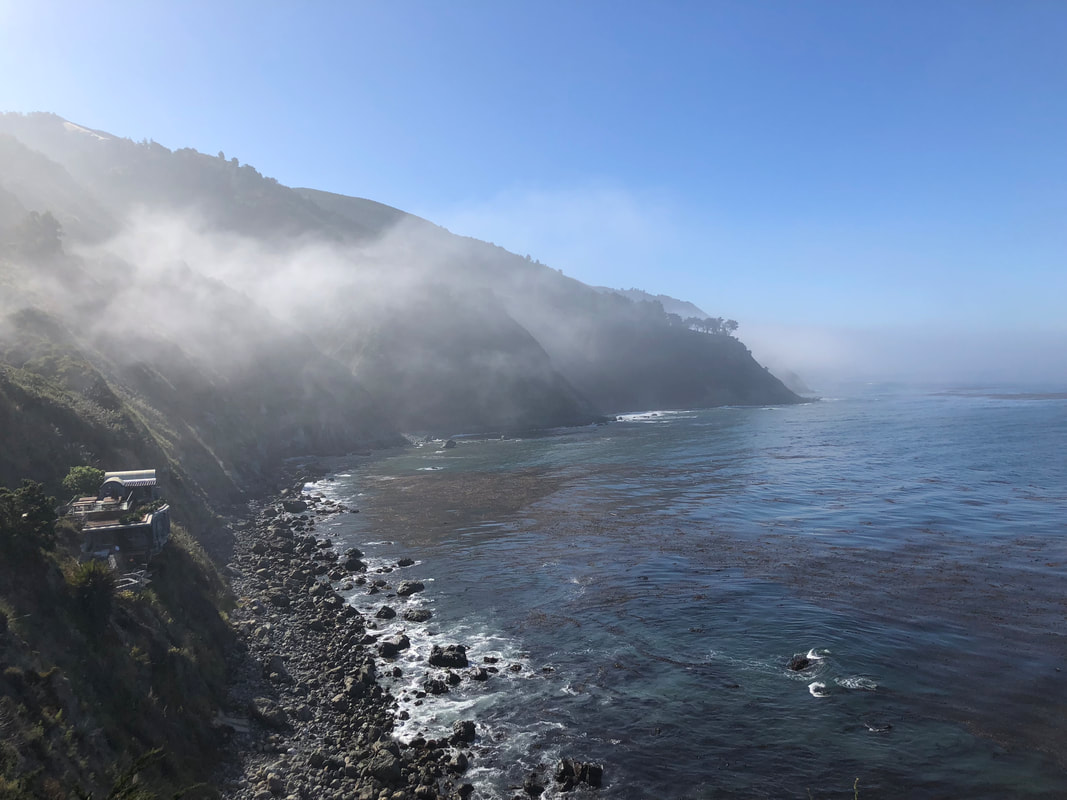
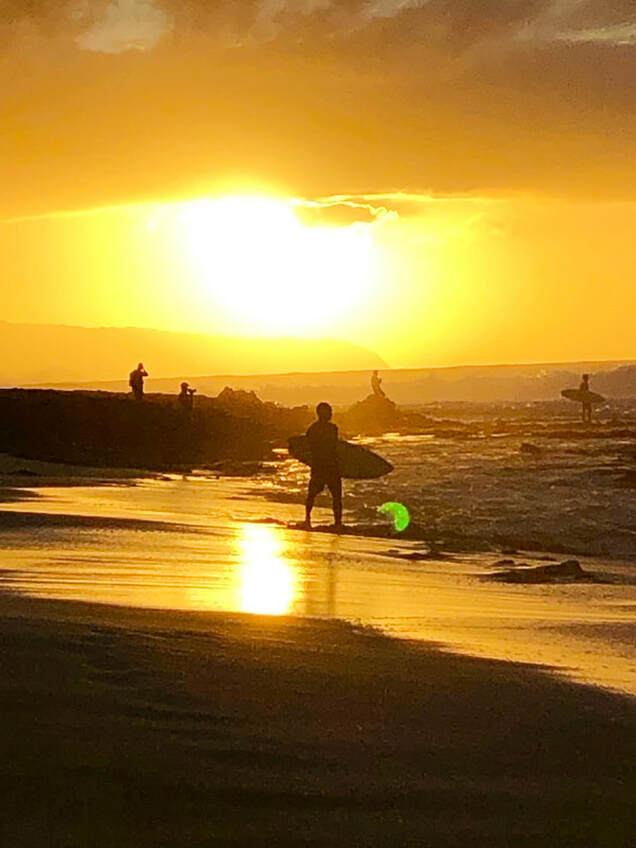


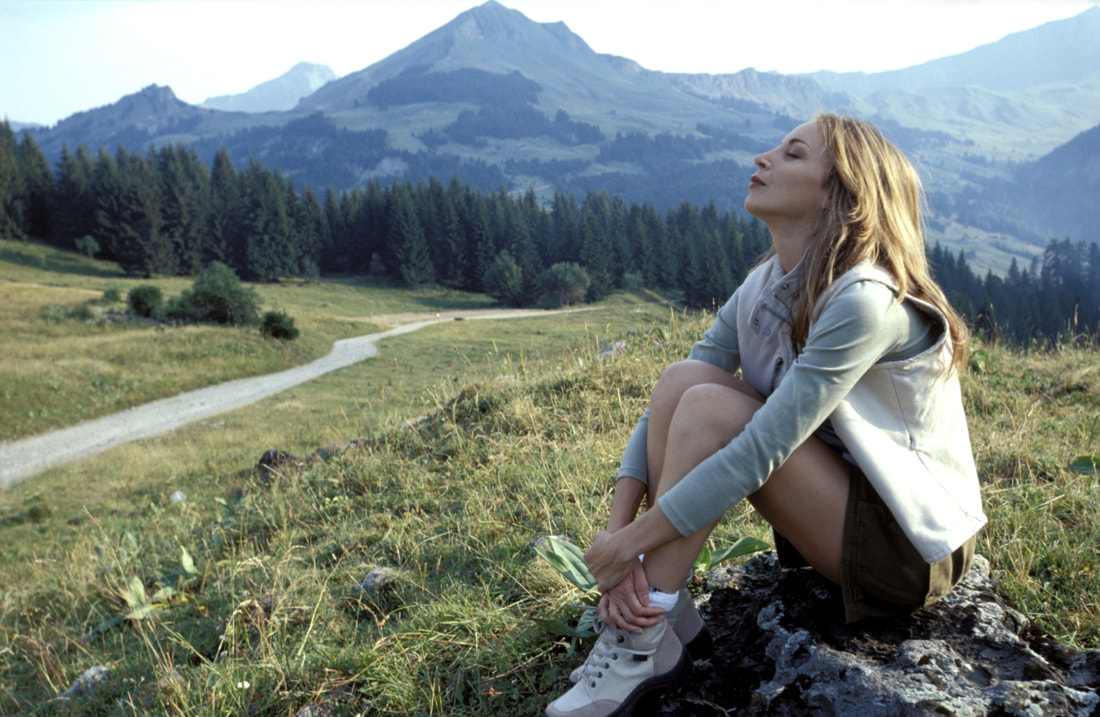

 RSS Feed
RSS Feed